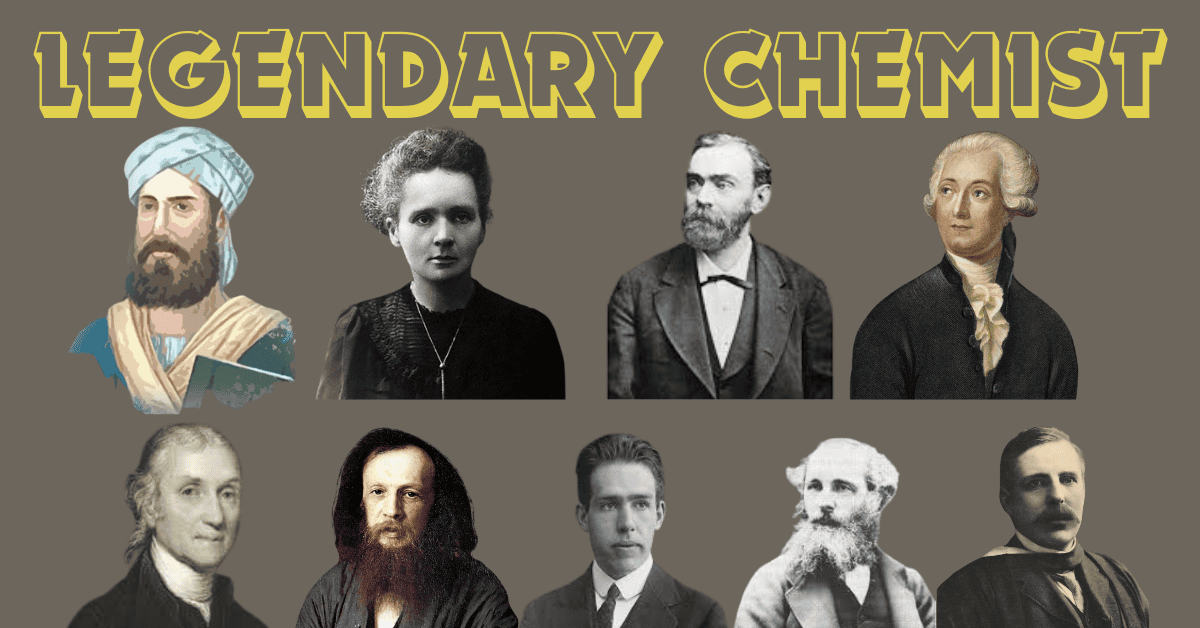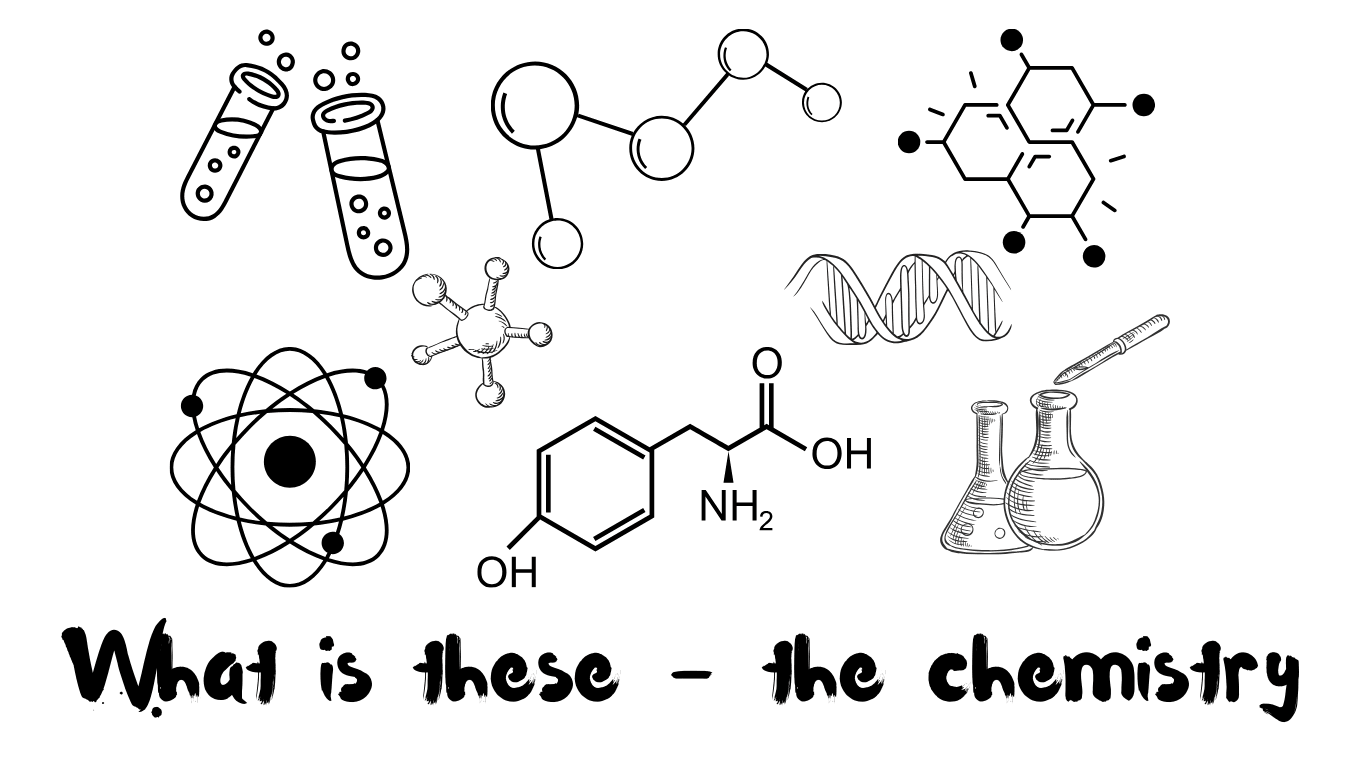Chemistry isn’t just a startup that emerged a few years ago—it is one of the greatest and most profound sectors of science. The structured study of chemistry officially began in the 8th century with the revolutionary thoughts of Jabir Ibn Hayyan. However, even before the birth of Jesus Christ, humanity had already discovered special use cases of chemistry, unknowingly laying the foundation for this extraordinary field.
Throughout history, thousands of legendary minds have contributed to chemistry with their urbanic illustrative thoughts, devoting decades to expanding its boundaries. Many sacrificed time with their families, choosing instead to immerse themselves in mysterious discoveries, filling blocks of paper with groundbreaking ideas. They embraced risk, failure, and relentless innovation, pushing forward with an active, materialistic understanding of the elements.
Because of their dedication and courage, chemistry has reached its current stature—a science that shapes everything around us. These 51 legendary chemists didn’t just redefine chemistry; they transformed the course of history itself, shifting the very rotation of the Earth with their contributions:
List of 51 chemist legends changed the history of chemistry
1. Jabir ibn Hayyan (c. 721 – c. 815)

- Books: Kitab al-Kimya (Book of Chemistry), Kitab al-Sab’een (Book of Seventy), The Book of Stones
- Innovations: Often regarded as the “father of chemistry,” Jabir is credited with laying the foundation for the experimental scientific method in chemistry. He introduced the concept of alchemy and distillation processes, along with important chemical techniques like crystallization, evaporation, and sublimation. He also worked on the preparation of acids, including nitric acid, hydrochloric acid, and sulfuric acid.
- Legendary Formula: Jabir is said to have created the first laboratory equipment, and his methods of separating substances via distillation influenced modern chemical practices.
- Life Lessons: Jabir’s work teaches the value of systematic experimentation and the importance of innovation in advancing scientific knowledge. His blend of mysticism with empirical science shows that curiosity often leads to profound discoveries.
- Struggle: Much of Jabir’s life is shrouded in mystery, with many of his works being attributed to other figures later on, especially because of the era’s lack of documentation. Despite this, his contributions remain crucial to chemistry.
- Why Important: Jabir ibn Hayyan is considered one of the most influential figures in the history of chemistry. His pioneering work on distillation and acids paved the way for future scientific developments in chemistry.
- Famous Nickname: The “father of chemistry.”
2. Antoine Lavoisier (1743 – 1794)
- Books: Traité Élémentaire de Chimie (Elementary Treatise of Chemistry)
- Innovations: Lavoisier is often called the “father of modern chemistry.” His most important contribution was the law of conservation of mass, which states that mass is neither created nor destroyed in a chemical reaction. He also helped to develop the modern system of chemical nomenclature.
- Legendary Formula: Lavoisier’s law of conservation of mass, which is fundamental to the study of chemical reactions: Mass of reactants = Mass of products.
- Life Lessons: Lavoisier’s life teaches us about the power of perseverance in the face of adversity and the importance of systematic experimentation. His methodical approach to chemistry was groundbreaking.
- Struggle: Lavoisier faced political turmoil during the French Revolution, leading to his execution by guillotine in 1794. Despite his scientific contributions, his association with the old regime led to his tragic end.
- Why Important: His work is the cornerstone of modern chemistry, influencing our understanding of chemical reactions and the systematic study of elements.
- Famous Nickname: The “father of modern chemistry.”
3. Marie Curie (1867 – 1934)
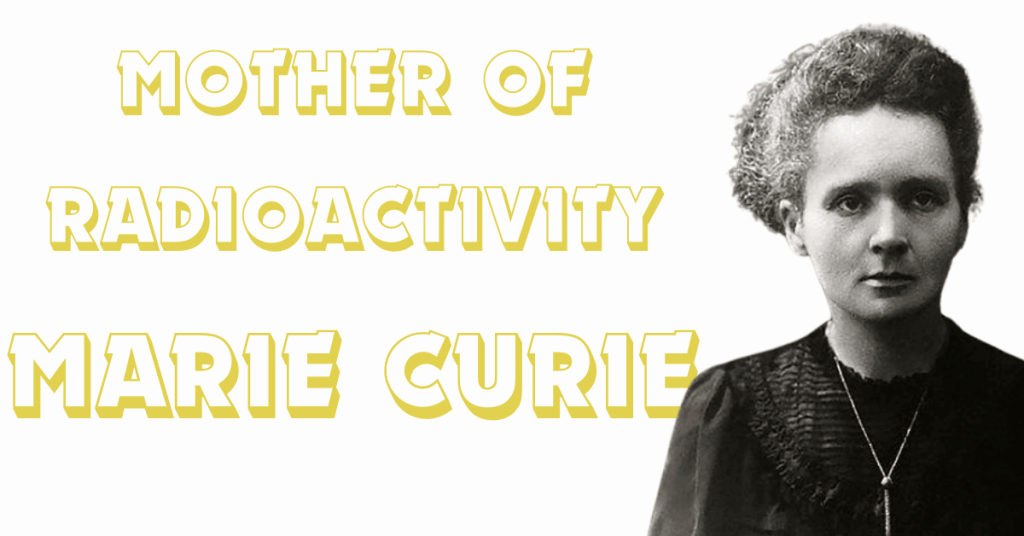
- Books: Pierre Curie (written with her husband), Radioactive Substances
- Innovations: Marie Curie discovered the elements polonium and radium, pioneered the study of radioactivity (a term she coined), and developed mobile X-ray units during World War I. She was the first woman to win a Nobel Prize and remains the only person to have won Nobel Prizes in two different sciences (Physics and Chemistry).
- Legendary Formula: Curie’s work on the decay of radioactive elements and the isolation of radium made significant contributions to nuclear science, medicine, and radiation therapy.
- Life Lessons: Curie’s life is a testament to dedication, hard work, and overcoming gender barriers in a male-dominated scientific community. Her story shows the importance of passion and resilience in pursuing one’s goals.
- Struggle: As a woman in science, Curie faced significant challenges, including the skepticism of her peers and a lack of institutional support. Additionally, she suffered from health issues due to prolonged exposure to radiation, leading to her death from aplastic anemia.
- Why Important: Curie’s groundbreaking discoveries in radioactivity laid the foundations for modern nuclear chemistry, and her work continues to impact medicine, particularly in cancer treatment.
- Famous Nickname: The “Mother of Radioactivity.”
4. Joseph Priestley (1733 – 1804)

- Books: Experiments and Observations on Different Kinds of Air (1774), History and Present State of Electricity (1767)
- Innovations: Priestley is best known for his discovery of oxygen, which he originally called “dephlogisticated air,” and for his work on gases. He also discovered nitrous oxide (laughing gas) and ammonia. Priestley is credited with being one of the founding figures in the field of chemistry.
- Legendary Formula: Priestley’s work with oxygen was pivotal in debunking the phlogiston theory of combustion, laying the foundation for modern chemical reactions.
- Life Lessons: Priestley’s life teaches us the importance of perseverance and empirical investigation in scientific discovery. His curiosity and willingness to explore new ideas led him to challenge existing theories.
- Struggle: Despite his immense contributions, Priestley faced religious and political persecution, particularly due to his Unitarian views, which caused him to flee England.
- Why Important: Priestley’s discovery of oxygen fundamentally altered the understanding of respiration and combustion, laying the groundwork for future chemical research.
- Famous Nickname: Often referred to as the “father of oxygen chemistry.”
5. Robert Boyle (1627 – 1691)
- Books: The Sceptical Chymist (1661)
- Innovations: Boyle is best known for Boyle’s Law, which states that the pressure of a gas is inversely proportional to its volume at constant temperature. He is often considered the father of modern chemistry due to his promotion of the experimental method.
- Legendary Formula: Boyle’s Law: P ∝ 1/V (Pressure is inversely proportional to volume).
- Life Lessons: Boyle’s emphasis on experimentation and scientific skepticism was key in transitioning from alchemy to modern chemistry. His work teaches the importance of critical thinking and empirical evidence.
- Struggle: Boyle faced opposition from alchemists and traditional scholars who adhered to Aristotelian principles. Despite this, he persisted in advocating for a new, experimental approach to science.
- Why Important: Boyle’s advocacy for experimental science and his work on gases have made him one of the most significant figures in the history of chemistry.
- Famous Nickname: Often called the “father of modern chemistry.”
6. Dmitri Mendeleev (1834 – 1907)

- Books: Principles of Chemistry (1868)
- Innovations: Mendeleev is credited with creating the Periodic Table of Elements, arranging them based on atomic mass and chemical properties. He also predicted the discovery of several elements that had not yet been discovered at the time.
- Legendary Formula: Mendeleev’s Periodic Law and his Periodic Table, which organized elements by their atomic mass and predicted their properties.
- Life Lessons: Mendeleev’s perseverance and attention to detail demonstrate the importance of patience and careful observation in scientific discovery. His ability to predict unknown elements shows the power of scientific intuition.
- Struggle: Mendeleev faced resistance from his contemporaries, who did not immediately accept the periodic system. He also faced personal struggles, including financial difficulties and the loss of his family.
- Why Important: Mendeleev’s Periodic Table revolutionized the study of chemistry by organizing elements in a systematic way and predicting the properties of undiscovered elements.
- Famous Nickname: The “father of the Periodic Table.”
7. Linus Pauling (1901 – 1994)
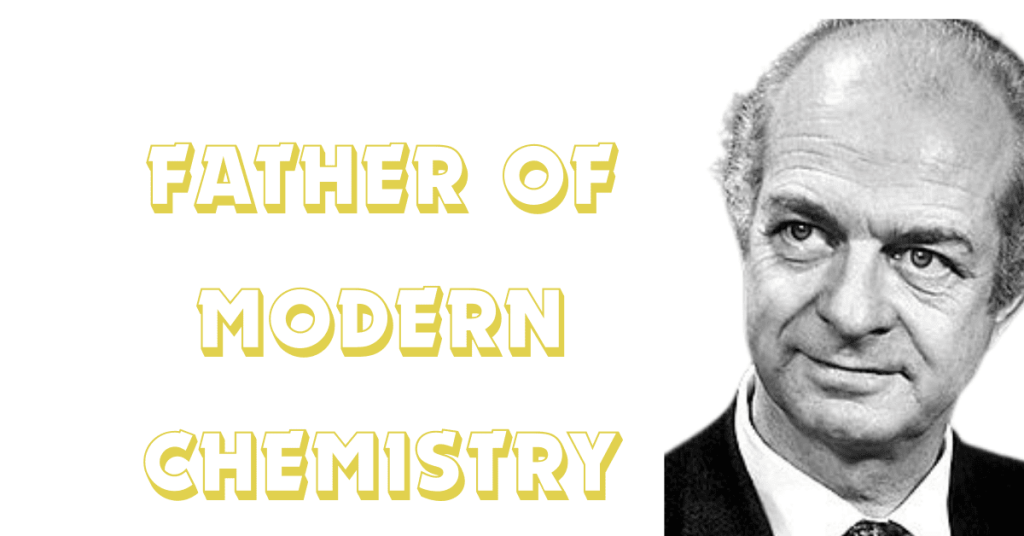
- Books: The Nature of the Chemical Bond (1939), Vitamin C and the Common Cold (1970)
- Innovations: Pauling is known for his work on the nature of the chemical bond and his development of the concept of hybridization. He also made groundbreaking contributions to the understanding of protein structures and was a key figure in the development of the field of molecular biology.
- Legendary Formula: Pauling’s work on the hybridization of atomic orbitals and his prediction of the 3D structure of proteins, including the alpha helix and beta-pleated sheet structures.
- Life Lessons: Pauling’s life emphasizes the importance of interdisciplinary research and the application of chemistry to address global issues, such as advocating for nuclear disarmament.
- Struggle: Pauling faced political controversies, particularly his outspoken opposition to nuclear weapons testing during the Cold War, which led to him being blacklisted.
- Why Important: Pauling’s work on chemical bonding and molecular structure has profoundly impacted chemistry and biology. His Nobel Peace Prize in 1962 also highlights the broader influence of chemistry on society.
- Famous Nickname: Often regarded as the “father of modern chemistry” for his contributions to chemical bonding.
8. Michael Faraday (1791 – 1867)
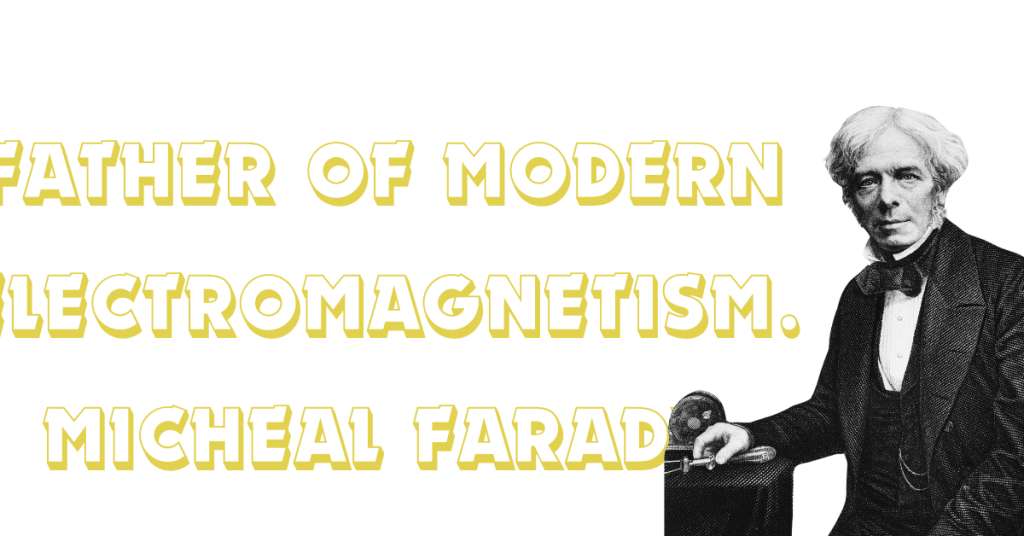
- Books: The Chemical History of a Candle (1861)
- Innovations: Faraday discovered electromagnetic induction, the principle behind electric motors and transformers. He also made significant contributions to electrochemistry, including Faraday’s laws of electrolysis.
- Legendary Formula: Faraday’s Law of Induction: Induced EMF = -dΦ/dt (The induced electromotive force is proportional to the rate of change of magnetic flux).
- Life Lessons: Faraday’s life teaches the importance of curiosity and continuous learning. Coming from a poor background, he proved that anyone with passion and dedication could make groundbreaking scientific discoveries.
- Struggle: Despite limited formal education, Faraday became one of the most important experimentalists in science, showing that perseverance and determination can overcome obstacles.
- Why Important: Faraday’s discoveries in electromagnetism and electrochemistry laid the foundation for modern electrical engineering and chemistry.
- Famous Nickname: Faraday is often considered the “father of modern electromagnetism.”
9. August Kekulé (1829 – 1896)

- Books: Die Struktur der organischen Chemie (The Structure of Organic Chemistry)
- Innovations: Kekulé is famous for his structural formula for benzene, which revolutionized the understanding of organic chemistry. He also made significant contributions to the theory of chemical bonding.
- Legendary Formula: Kekulé’s representation of benzene as a six-membered ring with alternating single and double bonds (aromaticity).
- Life Lessons: Kekulé’s discovery of the structure of benzene reminds us of the importance of creative insight and imagination in scientific progress. His famous dream of a snake biting its tail led to the realization of the cyclic structure of benzene.
- Struggle: Kekulé faced opposition from his contemporaries, particularly chemists who clung to older models of chemistry. However, his persistence ultimately led to a breakthrough in organic chemistry.
- Why Important: Kekulé’s work on the structure of benzene has had lasting implications in organic chemistry, influencing the development of synthetic chemistry and molecular biology.
- Famous Nickname: The “father of organic chemistry.”
10. Rosalind Franklin (1920 – 1958)

- Books: X-ray Diffraction Studies of Crystalline Compounds
- Innovations: Franklin’s X-ray crystallography work provided critical data that helped in the discovery of the DNA double helix. Her photograph “Photograph 51” was pivotal in revealing the structure of DNA.
- Legendary Formula: Franklin’s X-ray diffraction images of DNA, which provided the key to understanding its helical structure.
- Life Lessons: Franklin’s story highlights the importance of dedication, precision, and the often-overlooked role of women in scientific discovery.
- Struggle: Franklin faced gender bias in the scientific community, and her crucial contributions were not fully recognized during her lifetime.
- Why Important: Franklin’s work laid the foundation for molecular biology and genetics. Her contributions to the discovery of DNA’s structure were crucial, even though her role was largely uncredited during her life.
- Famous Nickname: Often considered the “unsung heroine” of the discovery of DNA’s structure.
11. Robert Hooke (1635 – 1703)
- Books: Micrographia (1665)
- Innovations: Hooke is best known for Hooke’s Law of elasticity, which states that the force needed to extend or compress a spring is proportional to the distance it is stretched. He also made early contributions to the field of microscopy and was one of the first to observe cells.
- Legendary Formula: Hooke’s Law: F = -kx (Force is proportional to the displacement of the spring).
- Life Lessons: Hooke’s work teaches the importance of observation and the role of innovation in scientific progress. He demonstrated that persistence and ingenuity can yield groundbreaking discoveries, even when working with limited tools.
- Struggle: Despite his early success, Hooke’s contributions were often overshadowed by rivals like Isaac Newton. His relationship with Newton was particularly contentious, and Hooke’s ideas were often ignored or undervalued.
- Why Important: Hooke’s contributions to physics, biology, and chemistry laid the groundwork for several scientific fields, particularly in the study of materials and elasticity. His work in microscopy also had a lasting impact on biology.
- Famous Nickname: The “father of microscopy” and “the man who discovered the cell.”
12. Marie-Anne Lavoisier (1758 – 1836)
- Books: Marie-Anne Lavoisier contributed to the work on Traité Élémentaire de Chimie (co-written with her husband, Antoine Lavoisier).
- Innovations: While Antoine Lavoisier is often credited with the birth of modern chemistry, Marie-Anne Lavoisier played a significant role in assisting with her husband’s groundbreaking research. She translated important texts, conducted experiments, and documented their findings, particularly in the areas of combustion and the nature of gases.
- Legendary Formula: Although Marie-Anne did not independently create formulas, her contributions to the experiments leading to the law of conservation of mass were vital.
- Life Lessons: Marie-Anne Lavoisier’s life is a reminder of the collaborative nature of science and the importance of the unsung figures in the background of history. She showed how support and dedication in the scientific community can create revolutionary advancements.
- Struggle: As a woman in science, Marie-Anne faced significant societal constraints. Despite her critical role in her husband’s work, she was not widely recognized during her lifetime.
- Why Important: Marie-Anne’s contributions were instrumental to Antoine’s work, particularly in documenting and communicating scientific concepts. Her participation in experimental science shows the vital role of women in scientific advancement.
- Famous Nickname: “The forgotten co-laboratory partner” of Antoine Lavoisier.
13. Gilbert N. Lewis (1875 – 1946)
- Books: Valence and the Structure of Atoms and Molecules (1923)
- Innovations: Lewis is famous for developing the Lewis dot structure, which is a representation of valence electrons in atoms. He also contributed to the concept of covalent bonds and developed the Lewis acid-base theory.
- Legendary Formula: Lewis’ octet rule: Atoms tend to combine in a way that results in eight electrons in their valence shell (except for hydrogen).
- Life Lessons: Lewis’s work emphasizes the importance of clarity in scientific thinking. His development of simple yet powerful models of bonding taught us that sometimes the most elegant solutions are the most straightforward.
- Struggle: Despite his significant scientific contributions, Lewis faced challenges in receiving widespread recognition. His ideas about acids and bases, for instance, took time to gain acceptance.
- Why Important: Lewis’ work on chemical bonding and acid-base theory has had a lasting impact on the field of chemistry. The Lewis dot structure remains an essential tool for understanding molecular structures.
- Famous Nickname: Known as one of the foremost contributors to modern theories of chemical bonding.
14. Sir Humphry Davy (1778 – 1829)
- Books: Elements of Chemical Philosophy (1812), Researches, Chemical and Philosophical (1827)
- Innovations: Davy is best known for his discovery of several chemical elements, including sodium, potassium, calcium, magnesium, and barium. He is also credited with discovering the use of electrolysis to isolate elements and introducing the concept of the ion.
- Legendary Formula: Davy did not have a single formula associated with his name, but his work on the isolation of elements through electrolysis was groundbreaking.
- Life Lessons: Davy’s life demonstrates how curiosity and experimentation can lead to profound discoveries. His emphasis on experimental techniques showed that understanding chemistry requires hands-on work and observation.
- Struggle: Davy faced several personal struggles, including financial issues and the challenges of being an inventor in an era before industrial chemistry. He also dealt with the early death of his wife, which impacted his emotional well-being.
- Why Important: Davy’s discoveries expanded the understanding of chemical elements and their properties. His work also set the stage for the later development of electrochemistry.
- Famous Nickname: The “father of modern electrochemistry.”
15. Lise Meitner (1878 – 1968)
- Books: Lise Meitner did not write books, but her work has been documented extensively in scientific literature.
- Innovations: Meitner played a key role in the discovery of nuclear fission, particularly in collaboration with Otto Hahn. Her theoretical understanding of the process helped explain how atoms could be split to release energy.
- Legendary Formula: Meitner’s work was pivotal in understanding nuclear fission: nucleus + neutron → smaller nuclei + energy (splitting of the atomic nucleus).
- Life Lessons: Meitner’s story teaches the importance of perseverance in scientific research. Despite being overlooked for the Nobel Prize, her work on fission had a monumental impact on both science and history.
- Struggle: Meitner faced sexism in her scientific career, and despite her crucial contributions to the discovery of nuclear fission, she was excluded from the Nobel Prize, which was awarded to Otto Hahn.
- Why Important: Meitner’s research laid the foundation for the development of nuclear energy and atomic weapons. Her insights into nuclear fission were critical in shaping modern physics and chemistry.
- Famous Nickname: Often referred to as the “mother of nuclear fission.”
16. Henry Moseley (1887 – 1915)
- Books: Moseley did not write any major books, but his research papers are highly influential in atomic physics and chemistry.
- Innovations: Moseley is famous for Moseley’s Law in X-ray spectra, which proved that atomic number, not atomic mass, is the defining characteristic of an element. This discovery led to the reordering of the Periodic Table based on atomic number.
- Legendary Formula: Moseley’s Law: f = R(Z – σ)^2 (where f is the frequency of X-ray radiation, Z is the atomic number, and σ is a screening constant).
- Life Lessons: Moseley’s short life teaches the importance of scientific precision and how a single discovery can change the course of scientific understanding.
- Struggle: Moseley’s promising career was cut short when he was killed in action during World War I at the age of 27, preventing him from making more scientific contributions.
- Why Important: Moseley’s work was crucial in establishing the modern Periodic Table and the correct order of elements. His contributions were fundamental to the development of nuclear science.
- Famous Nickname: The “father of atomic number” for his work on the X-ray spectra of elements.
17. Ernest Rutherford (1871 – 1937)
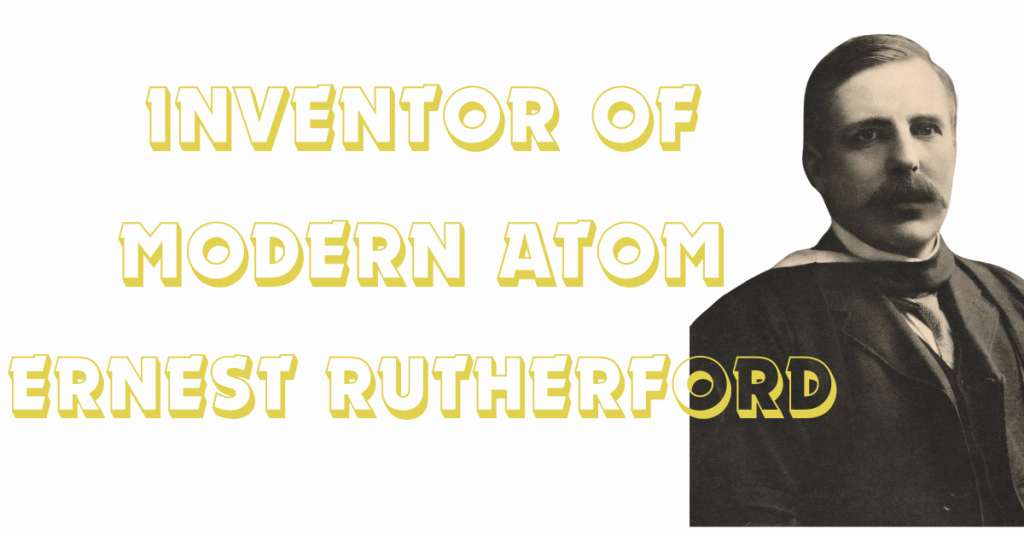
- Books: Radioactive Substances (1904), The Transmutation of Elements (1917)
- Innovations: Rutherford is known as the “father of nuclear physics” for his discovery of the atomic nucleus. He also carried out the famous gold foil experiment, which showed that the atom is mostly empty space with a small, dense nucleus at the center.
- Legendary Formula: Rutherford’s gold foil experiment led to the Rutherford model of the atom, which was fundamental to later atomic theory.
- Life Lessons: Rutherford’s career highlights the power of experimental science and how a single experiment can lead to revolutionary ideas about the structure of matter.
- Struggle: Rutherford faced the challenge of working in a rapidly developing scientific field, where many of his ideas were questioned before being proven. Despite this, he made significant advancements in atomic theory.
- Why Important: Rutherford’s discovery of the atomic nucleus paved the way for the development of nuclear chemistry and quantum mechanics.
- Famous Nickname: The “father of nuclear physics.”
18. John Dalton (1766 – 1844)

- Books: A New System of Chemical Philosophy (1808)
- Innovations: Dalton is famous for developing the atomic theory of matter, which proposed that each element is made up of atoms of a single, unique type. He also contributed to the understanding of color blindness, a condition that later became associated with his name.
- Legendary Formula: Dalton’s Atomic Theory, which included the postulate that atoms of different elements combine in fixed ratios to form compounds.
- Life Lessons: Dalton’s life teaches the importance of rigor and consistency in scientific work. His atomic theory helped establish chemistry as a quantitative science.
- Struggle: Dalton’s early life was challenging due to his humble background, but his perseverance led him to scientific success. Despite his contributions, his work was often slow to gain widespread recognition.
- Why Important: Dalton’s atomic theory is foundational to modern chemistry and is still used today to explain the behavior of atoms in chemical reactions.
- Famous Nickname: The “father of atomic theory.”
19. Thomas Graham (1805 – 1869)

- Books: Elements of Chemistry (1835)
- Innovations: Graham is known for formulating Graham’s Law of Diffusion, which states that the rate of diffusion of a gas is inversely proportional to the square root of its molar mass.
- Legendary Formula: Graham’s Law: Rate of diffusion ∝ 1/√Molar mass.
- Life Lessons: Graham’s work demonstrates the importance of patience and careful observation. His experiments with gases helped develop a deeper understanding of molecular behavior.
- Struggle: Graham faced challenges in gaining recognition for his work, as many of his theories were initially met with skepticism.
- Why Important: Graham’s discoveries laid the foundation for the study of gas laws and molecular behavior.
- Famous Nickname: The “father of diffusion theory.”
20. Alfred Werner (1866 – 1919)
- Books: Lehre von der Struktur der komplexen Verbindungen (Teaching on the Structure of Complex Compounds, 1911)
- Innovations: Werner is known for his work on coordination compounds and the concept of coordination chemistry, for which he won the Nobel Prize in Chemistry in 1913.
- Legendary Formula: Werner’s theory of coordination complexes and the coordination number, which describes the number of ligand atoms bonded to a central metal ion.
- Life Lessons: Werner’s work teaches that a deep understanding of chemical structure is key to innovation. His life reminds us of the importance of interdisciplinary approaches to solving scientific problems.
- Struggle: Werner faced initial resistance to his coordination theory, but persistence led to his recognition as one of the key figures in inorganic chemistry.
- Why Important: Werner’s theories revolutionized inorganic chemistry and our understanding of complex compounds.
- Famous Nickname: “Father of coordination chemistry.”
21. Albert Einstein (1879 – 1955)
- Books: Relativity: The Special and General Theory (1916)
- Innovations: Although primarily known for his work in physics, Einstein’s work on the photoelectric effect provided crucial evidence for quantum theory and earned him the Nobel Prize in Physics in 1921. He also contributed to the understanding of chemical reactions in terms of molecular movement and thermodynamics.
- Legendary Formula: Einstein’s famous equation E = mc², showing the relationship between energy (E), mass (m), and the speed of light (c).
- Life Lessons: Einstein’s life teaches the importance of curiosity and the value of thinking outside the box. His work emphasizes the interplay between theory and experimentation in scientific progress.
- Struggle: As an outsider to the academic establishment at times, Einstein faced significant challenges in gaining recognition for his ideas. He also struggled with being viewed as an eccentric figure.
- Why Important: Einstein’s contributions revolutionized both physics and chemistry. His theory of relativity and quantum contributions remain some of the most important in the history of science.
- Famous Nickname: “The father of modern physics.”
22. Friedrich Wöhler (1800 – 1882)
- Books: A Treatise on Organic Chemistry (1830)
- Innovations: Wöhler is best known for synthesizing urea from ammonium cyanate, which disproved the idea that organic compounds could only be synthesized by living organisms (vitalism). This marked the beginning of the field of organic chemistry.
- Legendary Formula: Wöhler’s synthesis of urea: NH₄CNO → (NH₂)₂CO.
- Life Lessons: Wöhler’s life teaches the importance of challenging prevailing ideas and being open to new perspectives. His work showed how experimentation can lead to paradigm shifts in science.
- Struggle: Wöhler faced opposition from proponents of vitalism, but his work ultimately led to the rejection of the concept that organic compounds could only come from living organisms.
- Why Important: Wöhler’s synthesis of urea is considered one of the founding moments of organic chemistry and bridged the gap between organic and inorganic chemistry.
- Famous Nickname: “The father of organic chemistry.”
23. Edward Frankland (1825 – 1899)
- Books: Lectures on the Applications of Chemistry (1859)
- Innovations: Frankland is credited with the discovery of the concept of valency in chemical bonding and for developing the first systematic approach to understanding how atoms bond in molecules.
- Legendary Formula: Frankland’s work on valency led to a more systematic understanding of chemical bonding and the ways atoms combine.
- Life Lessons: Frankland’s career teaches the importance of thorough research and the pursuit of new ideas. His contributions to bonding theory laid the groundwork for later developments in chemical bonding.
- Struggle: Despite facing early challenges, including a lack of formal education, Frankland overcame these difficulties and contributed to major advancements in chemical theory.
- Why Important: Frankland’s work on valency revolutionized the understanding of chemical bonding and laid the foundation for modern theories of chemical reactions.
- Famous Nickname: “The father of valency.”
24. Wilhelm Röntgen (1845 – 1923)
- Books: Röntgen did not write any books, but his work has been extensively published in scientific journals.
- Innovations: Röntgen is best known for the discovery of X-rays, which has had profound impacts on medicine, physics, and chemistry. His discovery was a breakthrough in understanding radiation.
- Legendary Formula: Röntgen’s discovery of X-rays did not involve a specific formula but led to the development of X-ray technology.
- Life Lessons: Röntgen’s life teaches the importance of serendipity in science and how unexpected discoveries can change the world.
- Struggle: Röntgen worked in relative obscurity, and his discovery of X-rays, though revolutionary, was initially met with skepticism.
- Why Important: Röntgen’s discovery of X-rays enabled advances in medical imaging and radiation therapy, marking one of the greatest breakthroughs in science.
- Famous Nickname: “The father of X-ray technology.”
25. Paul Dirac (1902 – 1984)
- Books: The Principles of Quantum Mechanics (1930)
- Innovations: Dirac’s work in quantum mechanics and his prediction of the existence of antimatter were groundbreaking. He formulated the Dirac equation, which describes the behavior of fermions and predicted the existence of the positron.
- Legendary Formula: Dirac’s equation: [α·p + βm]ψ = Eψ.
- Life Lessons: Dirac’s work emphasizes the importance of theoretical thinking in science. His quiet, methodical approach to problems reminds us of the value of deep contemplation and precision.
- Struggle: Despite being a genius, Dirac was known for his social awkwardness and struggled with communication and personal relationships throughout his life.
- Why Important: Dirac’s work revolutionized theoretical physics and chemistry. His prediction of antimatter was later confirmed experimentally and became a cornerstone of modern physics.
- Famous Nickname: “The father of quantum electrodynamics.”
26. Hermann Kopp (1817 – 1892)
- Books: History of the Development of the Chemical Elements (1842)
- Innovations: Kopp made significant contributions to the understanding of chemical elements and their properties. He is known for his work on the molecular weight of various chemical compounds and his early work on the theory of chemical bonding.
- Legendary Formula: Kopp’s work in molecular weights helped in the determination of atomic masses, which were critical for the development of the periodic table.
- Life Lessons: Kopp’s dedication to detailed experimental work exemplifies the importance of persistence in scientific discovery. His career is a testament to the value of combining theory with empirical data.
- Struggle: Despite his important contributions, Kopp’s work was often overshadowed by more prominent figures in chemistry at the time.
- Why Important: Kopp’s work on the development of the concept of atomic weight and his historical analysis of chemical elements helped solidify the foundations of modern chemistry.
- Famous Nickname: “The historian of chemistry.”
27. Fritz Haber (1868 – 1934)
- Books: The Chemical Problem of the Production of Ammonia from Nitrogen and Hydrogen (1904)
- Innovations: Haber is best known for the Haber-Bosch process, a method for synthesizing ammonia from nitrogen and hydrogen, which revolutionized the production of fertilizers. This process had a profound impact on agriculture and helped sustain the world’s population.
- Legendary Formula: The Haber-Bosch process for synthesizing ammonia: N₂ + 3H₂ → 2NH₃.
- Life Lessons: Haber’s life teaches us the duality of scientific progress—how it can have both positive and negative consequences. His work in both chemical warfare and fertilizers reflects the ethical challenges scientists may face.
- Struggle: Haber’s legacy is complicated by his involvement in developing chemical weapons during World War I, which contrasts with his work in agricultural chemistry.
- Why Important: The Haber-Bosch process is one of the most important innovations in chemistry, and his contributions to the development of modern fertilizers have saved countless lives through increased food production.
- Famous Nickname: “The father of chemical warfare” (due to his work on chemical weapons) and “The father of fertilizers” for the Haber-Bosch process.
28. Glenn Seaborg (1912 – 1999)
- Books: The Elements Beyond Uranium (1969), Seaborg’s World (1994)
- Innovations: Seaborg is renowned for his work in nuclear chemistry and his role in the discovery of ten elements, including plutonium. He also played a crucial role in the development of the actinide concept, which led to a better understanding of the periodic table.
- Legendary Formula: Seaborg’s actinide series, which redefined the placement of actinides on the periodic table and their chemical properties.
- Life Lessons: Seaborg’s career demonstrates how innovation and creativity in scientific thinking can lead to groundbreaking discoveries that shape entire fields.
- Struggle: Seaborg’s work in nuclear chemistry sometimes faced resistance due to the potential military applications of the elements he discovered, including plutonium.
- Why Important: Seaborg’s contributions to the development of nuclear chemistry and the periodic table were instrumental in both scientific and industrial advancements.
- Famous Nickname: “The father of modern nuclear chemistry.”
29. Jöns Jacob Berzelius (1779 – 1848)
- Books: Lärbok i kemien (1808), Lehrbuch der Chemie (1831)
- Innovations: Berzelius is credited with developing the system of chemical symbols and atomic weights, which revolutionized the way chemists communicated. He also discovered several elements, including selenium and thorium.
- Legendary Formula: Berzelius is famous for establishing a systematic method of chemical notation, which led to the modern chemical symbols used today.
- Life Lessons: Berzelius’s work shows the value of creating standardized systems in science, which helps unite diverse areas of study and enables further discovery.
- Struggle: While Berzelius faced many scientific challenges, his work faced initial resistance, particularly in standardizing chemical notation.
- Why Important: Berzelius’s work in developing chemical notation laid the groundwork for modern chemistry, making it easier for chemists to communicate and build upon each other’s work.
- Famous Nickname: “The father of modern chemistry.”
30. Alfred Nobel (1833 – 1896)
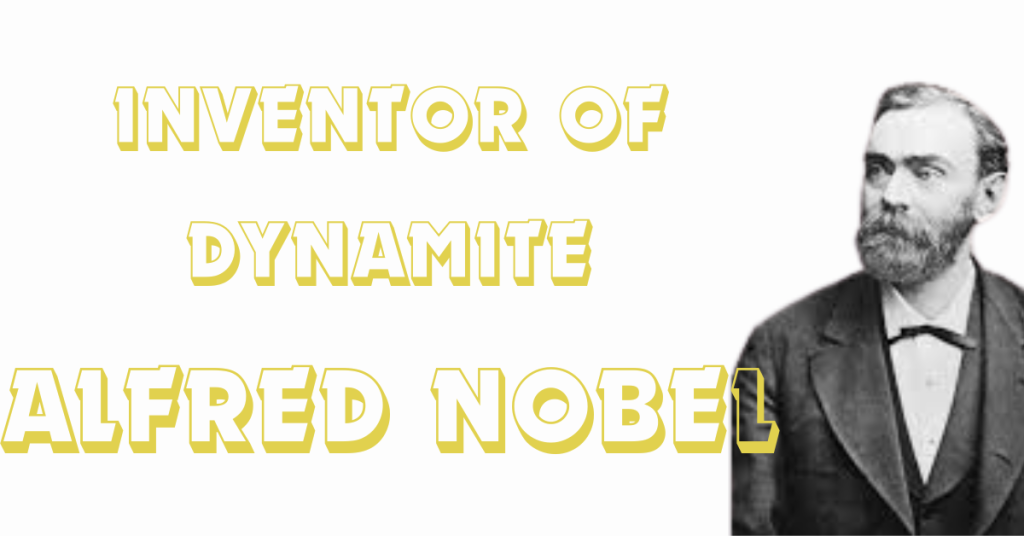
- Books: Nobel did not publish any scientific books, but his numerous patents and letters have been published and studied.
- Innovations: Nobel is most famous for inventing dynamite and developing the Nobel Prize. His inventions revolutionized construction, mining, and demolition, but his legacy is complicated by the destructive potential of his inventions.
- Legendary Formula: Nobel invented dynamite by stabilizing nitroglycerin, leading to the formula for its manufacture.
- Life Lessons: Nobel’s life illustrates the power of using wealth and influence to leave a positive legacy. His creation of the Nobel Prizes showed his desire to reward those whose contributions benefit humanity.
- Struggle: Nobel struggled with the ethical implications of his inventions, especially dynamite, and sought a way to balance the destructive potential of his work with a lasting, positive contribution to science.
- Why Important: Nobel’s innovations in explosives and his establishment of the Nobel Prizes have had lasting impacts on science, technology, and culture.
- Famous Nickname: “The inventor of dynamite” and “The founder of the Nobel Prizes.”
31. George Washington Carver (1864 – 1943)
- Books: The Carver Country (1943)
- Innovations: Carver was an agricultural chemist best known for his work with peanuts, developing hundreds of products from them, including dyes, plastics, gasoline, and even peanut butter.
- Legendary Formula: Carver didn’t create specific chemical formulas, but his contributions to agricultural chemistry and crop rotation methods revolutionized farming practices.
- Life Lessons: Carver’s life demonstrates the importance of resourcefulness and using science to solve real-world problems. His emphasis on improving the lives of poor farmers underscores the humanistic side of science.
- Struggle: Carver faced racial discrimination throughout his life, yet his work in agriculture and chemistry helped improve the lives of many African American farmers.
- Why Important: Carver’s work has had a lasting impact on sustainable agriculture and chemistry, providing new ways to use crops and improve soil health.
- Famous Nickname: “The Peanut Man” and “The Wizard of Tuskegee.”
32. Carl Bosch (1874 – 1940)
- Books: The Haber Process: A Chemical and Industrial History (1930)
- Innovations: Bosch is known for his role in industrializing the Haber-Bosch process for ammonia synthesis, which revolutionized fertilizer production and contributed to global food security.
- Legendary Formula: The industrial application of the Haber-Bosch process: N₂ + 3H₂ → 2NH₃ (production of ammonia from nitrogen and hydrogen).
- Life Lessons: Bosch’s work demonstrates the importance of translating scientific research into practical, large-scale applications that can improve life for millions of people.
- Struggle: Bosch faced the challenge of scaling the Haber process to industrial levels, which required overcoming significant technical and engineering obstacles.
- Why Important: Bosch’s role in scaling the Haber-Bosch process was a game-changer for the agricultural industry, providing fertilizers that sustain modern farming.
- Famous Nickname: “The father of industrial chemistry.”
33. Albert A. Michelson (1852 – 1931)
- Books: Light Waves and their Applications (1903)
- Innovations: Michelson is best known for his work on the measurement of the speed of light. He invented the Michelson interferometer, which allowed precise measurements of the speed of light, contributing to the eventual confirmation of Einstein’s theory of relativity.
- Legendary Formula: Michelson’s precision measurements helped refine the value of the speed of light, which had a profound impact on the development of physics and chemistry.
- Life Lessons: Michelson’s life shows that dedication and precision are key in scientific work. His relentless pursuit of accuracy in measuring light set the standard for future experiments.
- Struggle: Michelson faced many setbacks, including initial skepticism from the scientific community about his work, but he persisted and became the first American to win the Nobel Prize in Physics.
- Why Important: Michelson’s work laid the foundation for modern physics, especially in the study of light and relativity, affecting both physics and chemistry.
- Famous Nickname: “The first American Nobel Laureate in Physics.”
34. Niels Bohr (1885 – 1962)
- Books: The Structure of the Atom (1913)
- Innovations: Niels Bohr is famous for developing the Bohr model of the atom, which introduced the idea of quantized electron orbits. His work on the structure of atoms and quantum mechanics transformed the understanding of atomic structure.
- Legendary Formula: Bohr’s model of the atom described electrons in specific orbits with energy levels quantized by E = -13.6 eV (Z² / n²), which explained atomic spectra.
- Life Lessons: Bohr’s work teaches the importance of challenging existing models and theories. His intellectual courage and willingness to rethink core concepts led to revolutionary discoveries in physics and chemistry.
- Struggle: Bohr had to fight for acceptance of his atomic theory against established classical views, particularly those of Ernest Rutherford and others.
- Why Important: Bohr’s atomic model was one of the cornerstones of modern quantum mechanics and influenced the development of chemistry, physics, and quantum theory.
- Famous Nickname: “The father of modern atomic theory.”
35. Hans Bethe (1906 – 2005)
- Books: The Road from the Past (1999), Atomic Physics (1933)
- Innovations: Bethe was instrumental in explaining the nuclear reactions that power the sun. His work on the carbon-nitrogen-oxygen cycle and his contributions to quantum mechanics earned him the Nobel Prize in Physics in 1967.
- Legendary Formula: Bethe’s work on stellar nucleosynthesis showed how stars fuse elements to release energy.
- Life Lessons: Bethe’s life emphasizes the importance of curiosity, lifelong learning, and contributing to society. His dedication to understanding the mysteries of the universe helped him unlock secrets that changed our understanding of physics and chemistry.
- Struggle: Bethe faced challenges during his time working on the Manhattan Project, but his moral stance on using the atomic bomb set him apart from some of his colleagues.
- Why Important: Bethe’s contributions to nuclear physics, particularly his work on energy production in stars, were fundamental to both astrophysics and chemistry.
- Famous Nickname: “The father of stellar nucleosynthesis.”
36. Felix Hoffmann (1868 – 1946)
- Books: Hoffmann did not write any books, but his work was widely documented in scientific journals.
- Innovations: Hoffmann is best known for synthesizing acetylsalicylic acid, which was later marketed as aspirin. His work at Bayer revolutionized the field of pain relief and pharmaceuticals.
- Legendary Formula: The synthesis of acetylsalicylic acid, C₉H₈O₄, which became the foundation of modern pain relief.
- Life Lessons: Hoffmann’s story teaches the importance of experimentation and creativity in pharmaceutical research. His ability to turn a common compound into a revolutionary drug transformed medicine.
- Struggle: Hoffmann faced resistance when he tried to develop aspirin, but he overcame these challenges, ultimately creating one of the most widely used drugs in the world.
- Why Important: Hoffmann’s synthesis of aspirin has made an indelible impact on healthcare, treating everything from headaches to preventing heart attacks.
- Famous Nickname: “The inventor of aspirin.”
37. Martin Gouterman (1924 – 2018)
- Books: Biochemistry of the Porphyrins (1961), The Color of Life (1981)
- Innovations: Gouterman is known for his pioneering work in the chemistry of porphyrins, which play a critical role in biological processes such as photosynthesis and respiration. His work helped further understanding of the structure and function of heme and chlorophyll.
- Legendary Formula: Gouterman helped clarify the structure of heme and chlorophyll, which are essential for oxygen transport and photosynthesis, respectively.
- Life Lessons: Gouterman’s career teaches the importance of interdisciplinary research, particularly between chemistry, biology, and medicine, to uncover the secrets of life.
- Struggle: Gouterman faced challenges in bridging the gap between the fields of chemistry and biology, but his work was instrumental in advancing both fields.
- Why Important: His research on porphyrins and heme provided a deeper understanding of biochemical processes, with implications for medicine, biology, and chemistry.
- Famous Nickname: “The father of porphyrin chemistry.”
38. Henri Becquerel (1852 – 1908)
- Books: Becquerel did not publish a major book but his work was foundational in the study of radioactivity.
- Innovations: Becquerel is best known for discovering radioactivity. He found that uranium salts emitted rays that could expose photographic plates, which led to the discovery of radiation and the understanding of atomic decay.
- Legendary Formula: Becquerel’s work laid the groundwork for the concept of radioactivity, which was later expanded by Marie Curie.
- Life Lessons: Becquerel’s discovery teaches the value of serendipity in science and how curiosity can lead to groundbreaking discoveries. His unintentional discovery of radioactivity transformed both physics and chemistry.
- Struggle: Becquerel’s discovery was initially met with skepticism, but his persistence in documenting his findings eventually earned him recognition, including a Nobel Prize.
- Why Important: Becquerel’s work was the beginning of a new era in atomic science, opening the door for research into nuclear physics and radioactivity.
- Famous Nickname: “The father of radioactivity.”
39. James Clerk Maxwell (1831 – 1879)
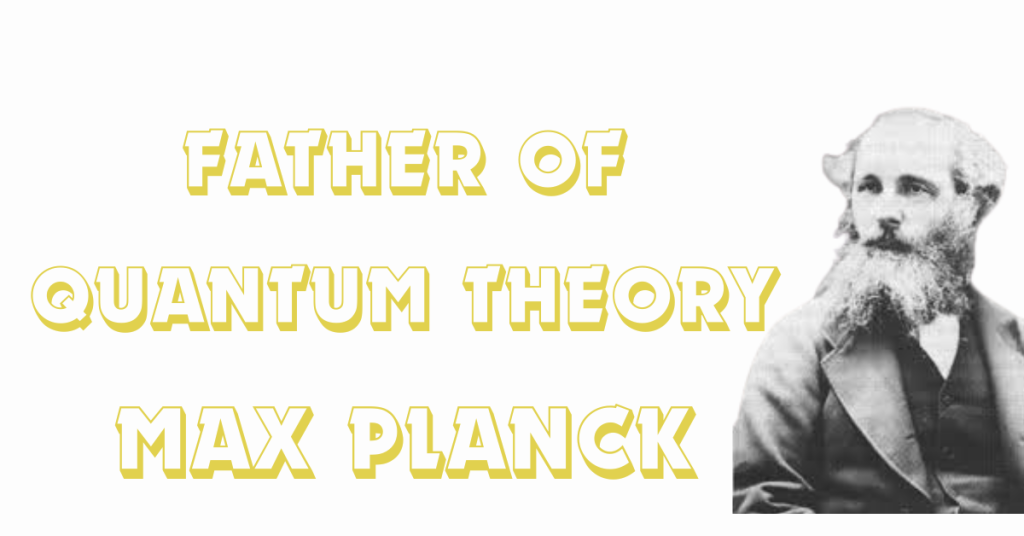
- Books: A Treatise on Electricity and Magnetism (1873)
- Innovations: Maxwell formulated the equations that describe electromagnetism, known as Maxwell’s equations, which form the foundation of modern physics, chemistry, and electrical engineering. His work also paved the way for later developments in quantum mechanics.
- Legendary Formula: Maxwell’s equations, which describe how electric and magnetic fields interact:
∇·E = ρ/ε₀, ∇×E = -∂B/∂t, ∇·B = 0, ∇×B = μ₀J + μ₀ε₀∂E/∂t. - Life Lessons: Maxwell’s work illustrates how the synthesis of multiple scientific disciplines—like electricity, magnetism, and thermodynamics—can lead to a profound understanding of nature.
- Struggle: Maxwell faced resistance to his ideas, especially from those who held to classical theories of physics, but his work ultimately transformed the landscape of science.
- Why Important: Maxwell’s equations are fundamental to the understanding of electromagnetism, influencing not only physics but also chemistry and modern technology.
- Famous Nickname: “The father of electromagnetism.”
40. William Ramsay (1852 – 1916)
- Books: The Gaseous Elements (1898), The Noble Gases (1904)
- Innovations: Ramsay is known for discovering the noble gases, including argon, helium, neon, krypton, and xenon. His work earned him the Nobel Prize in Chemistry in 1904.
- Legendary Formula: Ramsay’s discovery of the noble gases was a breakthrough in understanding the structure of the periodic table, leading to the addition of a new group of elements.
- Life Lessons: Ramsay’s life teaches the importance of curiosity and persistence. His ability to discover entirely new elements enriched the understanding of atomic theory and chemistry.
- Struggle: Ramsay initially faced skepticism regarding the existence of noble gases, but his work in isolating these elements solidified their place in the periodic table.
- Why Important: Ramsay’s discovery of the noble gases changed the understanding of chemical bonding and the properties of elements, influencing both chemistry and physics.
- Famous Nickname: “The discoverer of the noble gases.”
41. Lord Kelvin (William Thomson) (1824 – 1907)
- Books: Popular Lectures and Addresses (1891)
- Innovations: Lord Kelvin is best known for developing the Kelvin scale of temperature and his contributions to thermodynamics, particularly in understanding the relationship between heat and energy. His work helped define the concept of absolute zero.
- Legendary Formula: Kelvin’s contribution to the second law of thermodynamics and his formulation of the absolute temperature scale: T(K) = T(°C) + 273.15.
- Life Lessons: Kelvin’s life shows the importance of combining theory with experimental data. His work on the concept of absolute zero and thermodynamics reshaped the scientific understanding of energy.
- Struggle: Kelvin’s career was not without difficulty, as his early work on the age of the Earth was later disproven, but his advancements in thermodynamics remain timeless.
- Why Important: Lord Kelvin’s contributions to thermodynamics, particularly in the development of the absolute temperature scale, laid the foundation for the study of energy and heat in both physics and chemistry.
- Famous Nickname: “The father of thermodynamics.”
42. Harold Urey (1893 – 1981)
- Books: The Planets: Their Origin and Development (1952)
- Innovations: Urey is known for discovering deuterium, a stable isotope of hydrogen, which had profound implications in the study of nuclear chemistry and isotopic research.
- Legendary Formula: Urey’s work with isotopes led to the understanding of isotopic fractionation, essential for understanding chemical processes in nature.
- Life Lessons: Urey’s work demonstrates how careful experimentation and observation can lead to groundbreaking discoveries that expand the limits of scientific knowledge.
- Struggle: Urey faced numerous challenges in the pursuit of his isotope research, especially in the early stages of his career when his ideas were not immediately accepted.
- Why Important: Urey’s discovery of deuterium and his work on isotopic chemistry opened new doors for nuclear science, cosmology, and the study of planetary origins.
- Famous Nickname: “The discoverer of deuterium.”
43. Johannes Nicolaus Bronsted (1879 – 1947)
- Books: The Theory of Acids and Bases (1923)
- Innovations: Bronsted is famous for the Bronsted-Lowry acid-base theory, which defines acids as proton donors and bases as proton acceptors. This theory revolutionized the understanding of acid-base chemistry.
- Legendary Formula: The Bronsted-Lowry acid-base theory, HA ⇌ H⁺ + A⁻ (acid dissociation into proton and conjugate base).
- Life Lessons: Bronsted’s work exemplifies the importance of clarity and simplicity in defining chemical relationships. His theories continue to be fundamental in modern chemistry.
- Struggle: Bronsted faced challenges in developing his acid-base theory, as it was an alternative to the older Arrhenius theory, but it eventually gained widespread acceptance.
- Why Important: The Bronsted-Lowry theory remains essential in understanding chemical reactions involving protons and plays a key role in fields like biochemistry, environmental chemistry, and pharmaceuticals.
- Famous Nickname: “The father of modern acid-base theory.”
44. Albert Calmette (1863 – 1933)
- Books: L’Immunité Bactérienne (1909)
- Innovations: Calmette is known for his development of the BCG vaccine against tuberculosis, which has saved millions of lives. He also made important contributions to immunology and bacteriology.
- Legendary Formula: The BCG vaccine formulation, which uses weakened Mycobacterium bovis to stimulate immunity against tuberculosis.
- Life Lessons: Calmette’s work teaches the importance of perseverance in the face of disease and the power of medical science to fight epidemics.
- Struggle: Calmette faced difficulties in convincing medical authorities of the efficacy of the BCG vaccine, but his work eventually led to its widespread adoption.
- Why Important: Calmette’s development of the BCG vaccine remains one of the most important achievements in the fight against tuberculosis, a disease that still affects millions worldwide.
- Famous Nickname: “The creator of the BCG vaccine.”
45. George de Hevesy (1885 – 1966)
- Books: Radioactive Isotopes and Their Application in Medicine (1948)
- Innovations: De Hevesy is credited with pioneering the use of radioactive isotopes as tracers in chemical and biological research. His work earned him the Nobel Prize in Chemistry in 1943.
- Legendary Formula: The use of isotopic tracers, such as radioactive gold isotopes, to study chemical reactions and biological processes.
- Life Lessons: De Hevesy’s career demonstrates the importance of creativity in scientific inquiry and how an innovative approach to problem-solving can lead to groundbreaking discoveries.
- Struggle: Despite facing challenges in the early days of isotopic research, his dedication to exploring new ways of studying biological systems revolutionized medicine and chemistry.
- Why Important: De Hevesy’s development of isotope tracers is fundamental to modern biochemistry, medical diagnostics, and nuclear medicine.
- Famous Nickname: “The father of radioactive tracers.”
46. Irving Langmuir (1881 – 1957)
- Books: The Colloidal State (1917), Atomic Theory and the Structure of Matter (1926)
- Innovations: Langmuir is known for his work on surface chemistry and his development of the Langmuir adsorption isotherm, which describes the behavior of gases adsorbed on surfaces. He also made important contributions to the understanding of molecular layers.
- Legendary Formula: The Langmuir adsorption isotherm, θ = (K * P) / (1 + K * P), describing the adsorption of molecules on solid surfaces.
- Life Lessons: Langmuir’s story teaches the value of interdisciplinary research. His work bridged chemistry, physics, and engineering, showing how scientific progress often requires a synthesis of ideas.
- Struggle: Langmuir faced early skepticism about his surface chemistry ideas, but his persistence and ability to experimentally validate his theories led to his recognition and the Nobel Prize in Chemistry in 1932.
- Why Important: Langmuir’s contributions to surface science have had lasting impacts on chemistry, materials science, and industrial applications, especially in the development of catalysts and nanotechnology.
- Famous Nickname: “The father of surface chemistry.”
47. Emmanuelle Charpentier (1968 – Present)
- Books: CRISPR-Cas9: A New Tool for Genetic Engineering (2016)
- Innovations: Charpentier, along with Jennifer Doudna, co-discovered the CRISPR-Cas9 gene-editing technology, which revolutionized genetic engineering and holds the potential to cure genetic diseases, improve crops, and more.
- Legendary Formula: CRISPR-Cas9 gene-editing mechanism, gRNA + Cas9 protein = target DNA cleavage and modification.
- Life Lessons: Charpentier’s work exemplifies the importance of collaboration and persistence in scientific research. Her breakthrough in gene editing has opened a new frontier in medicine and biotechnology.
- Struggle: Charpentier, like many women in science, faced barriers to recognition, but her groundbreaking work on CRISPR-Cas9 ultimately earned her the Nobel Prize in Chemistry in 2020.
- Why Important: Charpentier’s work with CRISPR-Cas9 is one of the most significant advances in modern biotechnology, enabling unprecedented precision in genetic modification.
- Famous Nickname: “The co-discoverer of CRISPR-Cas9.”
48. Carl Linnaeus (1707 – 1778)
- Books: Systema Naturae (1735)
- Innovations: Linnaeus developed the binomial nomenclature system, which is still used today to name and classify organisms. His work laid the foundation for modern taxonomy and biology.
- Legendary Formula: Binomial nomenclature, Homo sapiens (for human beings).
- Life Lessons: Linnaeus’ dedication to systematizing life on Earth teaches the value of classification and organization in science, which allows for easier communication and understanding across disciplines.
- Struggle: Linnaeus faced criticism for his system, particularly from those who believed it oversimplified the diversity of life, but his taxonomy became universally accepted.
- Why Important: Linnaeus’ system of classification revolutionized biology and has shaped the way scientists study and understand living organisms, affecting many fields including ecology and genetics.
- Famous Nickname: “The father of modern taxonomy.”
49. Alexander Bain (1818 – 1903)
- Books: The Emotions and the Will (1859), Mental and Moral Science (1868)
- Innovations: Bain, a Scottish philosopher and psychologist, introduced ideas linking chemistry with mental processes, and he was influential in the study of the psychology of emotion, although he wasn’t strictly a chemist, his work paved the way for interdisciplinary studies.
- Legendary Formula: Bain’s theory of the emotions, which related mental states to physiological changes in the body, could be considered an early precursor to biochemistry’s understanding of the brain-body connection.
- Life Lessons: Bain’s career teaches the importance of cross-disciplinary thinking and its ability to inspire new areas of research.
- Struggle: Bain faced opposition to some of his psychological ideas, but his contributions helped lay the groundwork for future research in psychology and neurochemistry.
- Why Important: Though not a chemist per se, Bain’s work influenced the development of psychochemistry, combining psychological theory with emerging biochemistry.
- Famous Nickname: “The father of modern psychology.”
50. Ernest O. Lawrence (1901 – 1958)
- Books: Lawrence didn’t write comprehensive books, but his papers on the cyclotron and atomic research were pivotal.
- Innovations: Lawrence invented the cyclotron, a type of particle accelerator, which was crucial in the development of nuclear physics and chemistry. His work led to the discovery of many new elements.
- Legendary Formula: The cyclotron’s ability to accelerate particles to high speeds, E = (mv² / 2), was used in the creation of artificial isotopes.
- Life Lessons: Lawrence’s persistence and ingenuity in developing the cyclotron show the importance of practical innovation in advancing scientific knowledge and technology.
- Struggle: Lawrence faced the challenges of working with dangerous radiation and overcoming technical limitations, but his work led to significant advancements in chemistry and physics.
- Why Important: Lawrence’s cyclotron revolutionized nuclear research and led to major advancements in medical treatments and nuclear chemistry.
- Famous Nickname: “The inventor of the cyclotron.”
51. Richard R. Schrock (1945 – Present)
- Books: Schrock has not published any major books, but his research papers are highly influential in the field of chemistry.
- Innovations: Schrock was awarded the Nobel Prize in Chemistry in 2005 for his work on the development of the metathesis method in organic synthesis, which has revolutionized industrial chemistry.
- Legendary Formula: The metathesis reaction, which involves the exchange of partners between two molecules to form new products.
- Life Lessons: Schrock’s career teaches the importance of persistence in the face of complex scientific challenges and the potential to revolutionize industries with innovative solutions.
- Struggle: Schrock faced early skepticism from chemists about the viability of metathesis, but his persistence led to its adoption in industrial chemistry.
- Why Important: Schrock’s work on metathesis has had wide-ranging effects in the field of organic chemistry, particularly in the development of more efficient and sustainable chemical processes.
- Famous Nickname: “The father of metathesis.”

